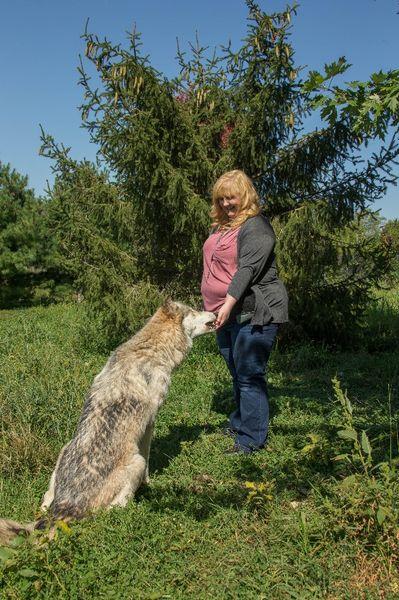In early September, Michelle Mullins, KPA-CTP, CPDT-KSA and Toni Mark, KPA-CTP of the PetSafe® Training & Behavior Education Team attended the Advanced Trainer Seminar at Wolf Park. Wolf Park is a not-for-profit organization dedicated to behavioral research, education and conservation. The objective is to improve the public’s understanding of wolves and the value they provide our environment.
At the Advanced Trainer Seminar, Michelle and Toni had the opportunity to train wolves, bison, gray foxes, red foxes and coyotes. Although dog and cat behavior is typically their expertise, there was a tremendous amount to learn from training other species.
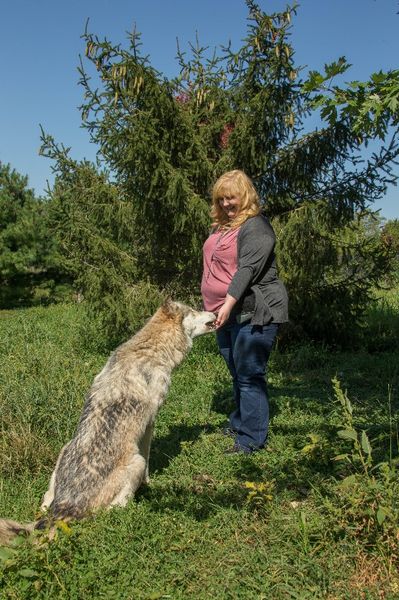
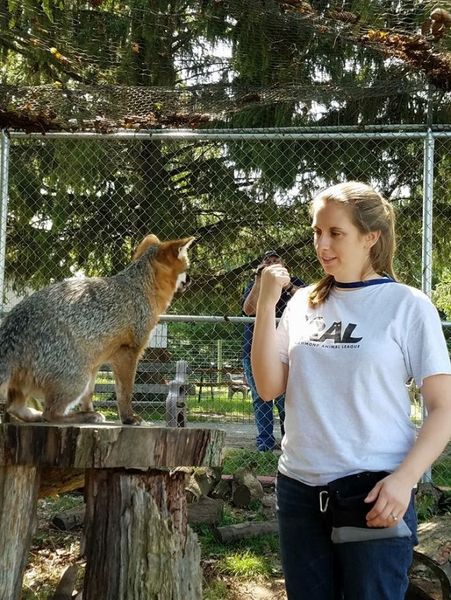
Here Toni and Michelle ask wolves and foxes to sit.
During the seminar, Michelle and Toni had the opportunity to observe wolf body language, especially to determine if any of the wolves looked stressed or exhibited conflicted body language. This meant that while a wolf might be excited to meet visitors, they might still be nervous and cautious to engage. They also practiced and trained a variety of wolf behaviors, including targets and A to B passes where wolves would be asked to visit another person.

All wolves interacted with people at their own pace. Here is Sparrow, a wolf puppy, watching the trainers from a safe spot.
Wolf Park has 5 wolf puppies approximately 5 months of age. In addition to extensive socialization protocols, Michelle and Toni got to watch as they regularly received “enrichment boxes” meant to provide them with exciting stimulation and an opportunity to perform some of their instinctual behaviors, such as ripping and tearing something apart. They also participated in some training for husbandry behaviors, like placing a paw on a small block, for nail trims.


Wolf puppies enjoy an enrichment box filled with treats and paper that can be shredded. The puppies enjoy shredding the paper and box just as much as they do eating the treats. Also pictured is Michelle teaching a wolf puppy to present her paw on a block for a nail trim.
Several of the foxes were especially social and frequently stopped by to say hello by climbing on their shoulders. When training foxes, Michelle and Toni focused on teaching the foxes to “come” and stand on a teeter board.
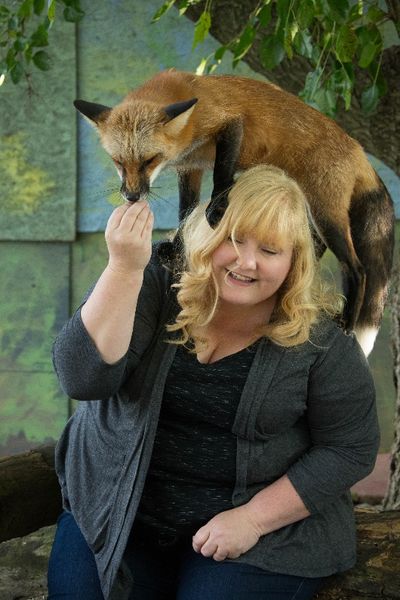
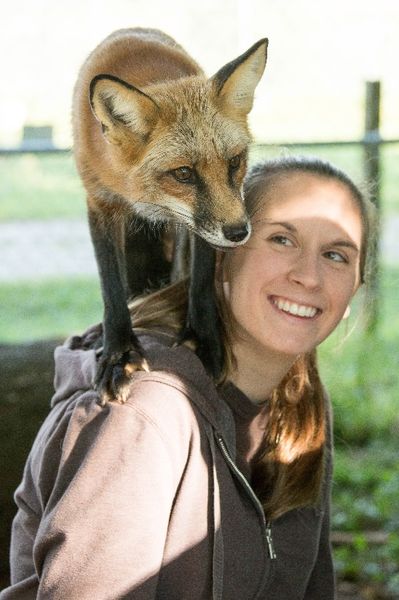
The red fox above, Scarlett, was very social and made tremendous leaps in training.
The bison had previously learned to target a ball at the end of the stick, so when Michelle and Toni visited, they focused on using that trained behavior to get the bison parallel to the truck to apply fly spray.
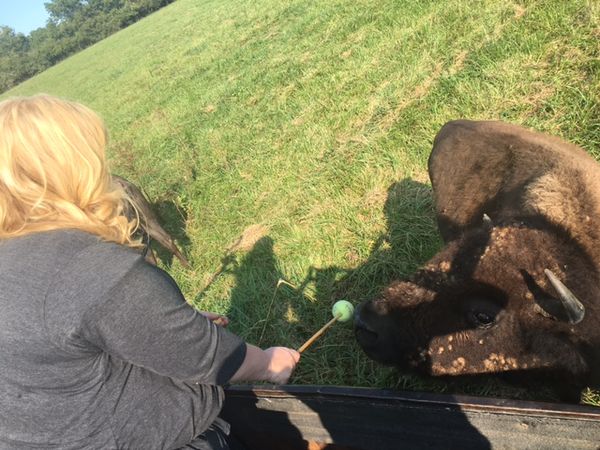
Michelle lines up a bison by guiding him with a target stick.
Finally, the coyotes, a rowdy bunch, and a few wolves required protected contact, so Michelle and Toni focused on feeding them through tubes attached to the enclosure. This provided a safe way to reward desirable behavior, like “sit” and “down”.
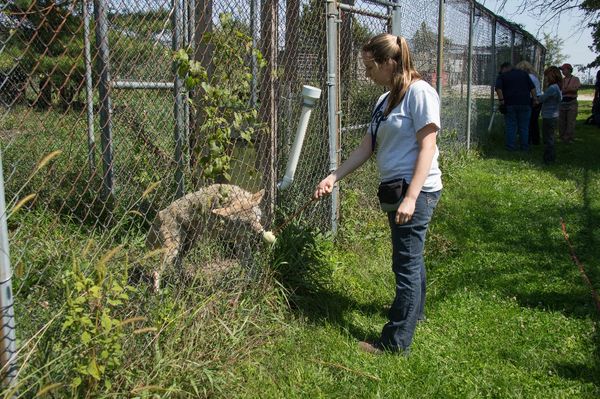
Here a coyote places his nose on a target stick and receives a treat through the tube.
The wonderful thing about training a new species is that it takes a trainer back to the basics. The trainers at Wolf Park use marker training, so Michelle and Toni had to click/blow whistles with pristine timing and deliver treats quickly and properly (using anything other than a flat hand ensured wolves would be nibbling your fingers). The foxes quickly lost focus if timing wasn’t quick enough, so it was definitely an exercise in speed.

High value treats, like cheese from a jar, must also be delivered quickly.
It was also an excellent opportunity to practice breaking down a big behavior into smaller parts for training. For example, training the foxes to walk on a teeter included rewarding the foxes for being near the teeter, placing one or two feet on a teeter, placing all four feet on a teeter, walking on the teeter, and eventually walking all the way to the other side so the teeter would shift.

Here a fox learns to climb on to a teeter board.
While the opportunity to visit with these interesting animals is very exciting, the most worthwhile piece is the education it provides. Both Michelle and Toni returned home better trainers thanks to the challenges these different species provided them with. Michelle was reminded how her body language can impact an animal when a wolf took an especially feisty interest in her. Toni really enjoyed practicing the precise timing the animals required in training. Providing food quickly was crucial to the training process!

